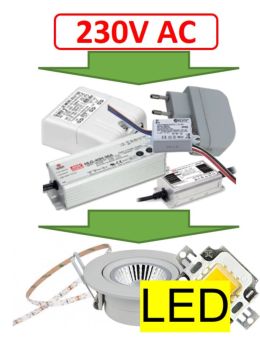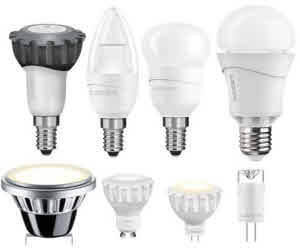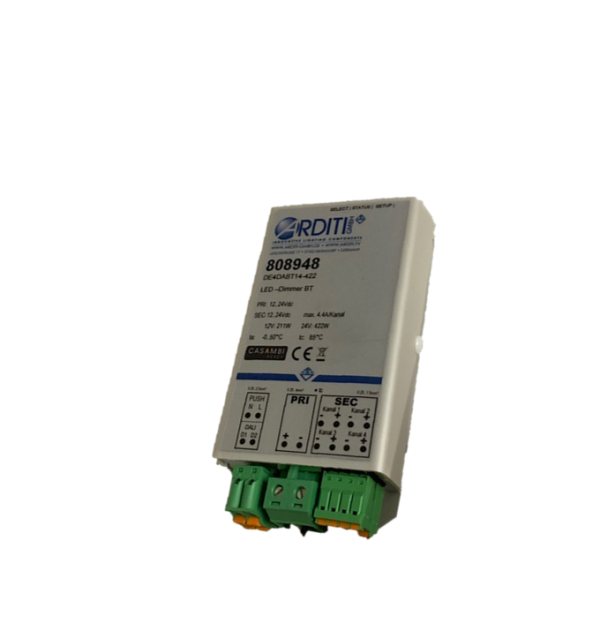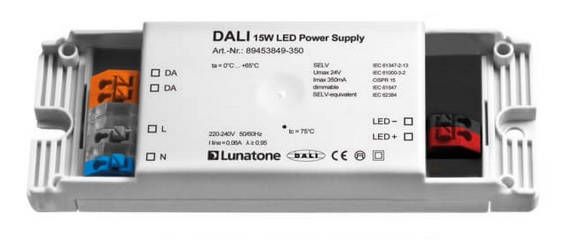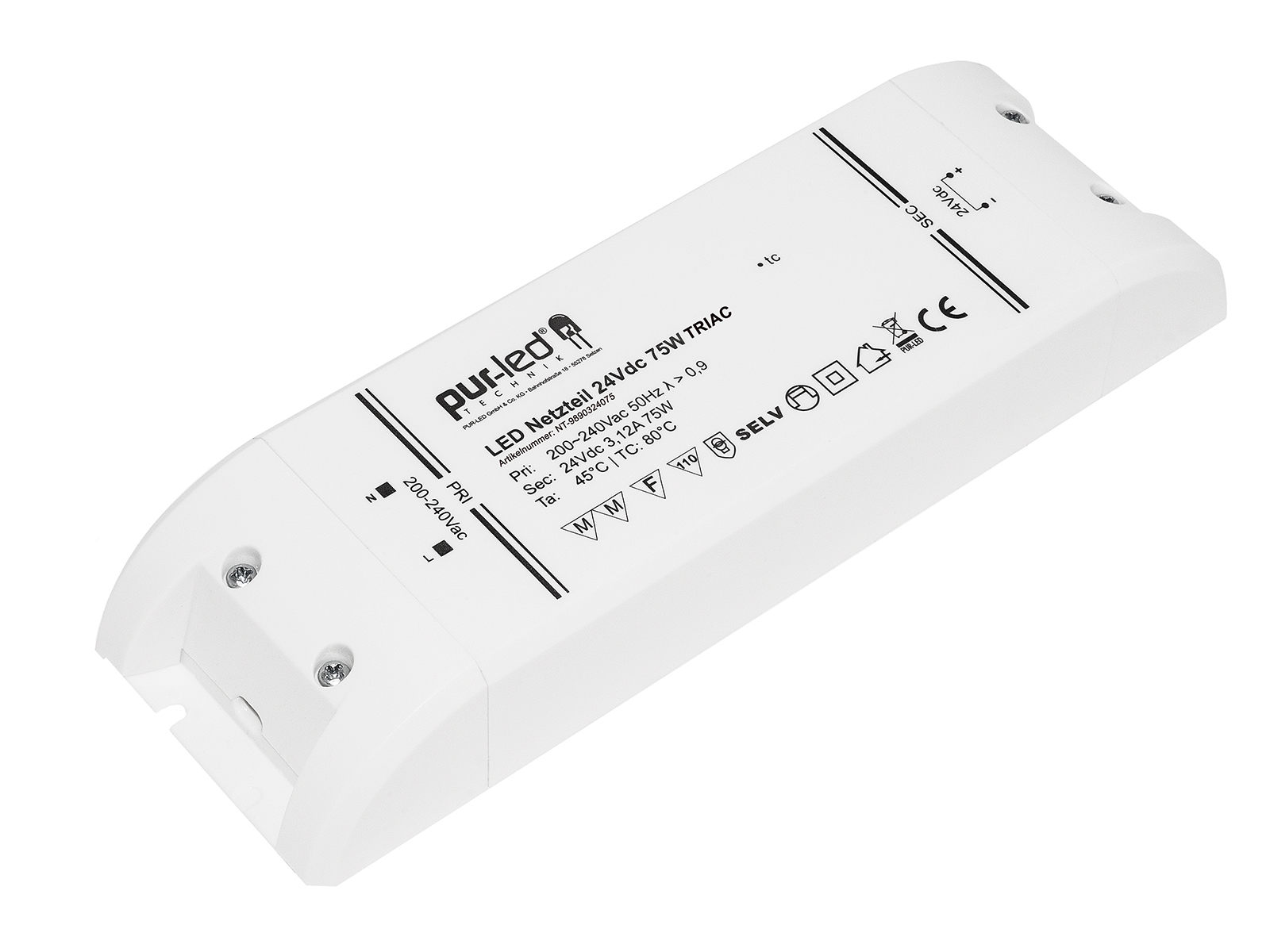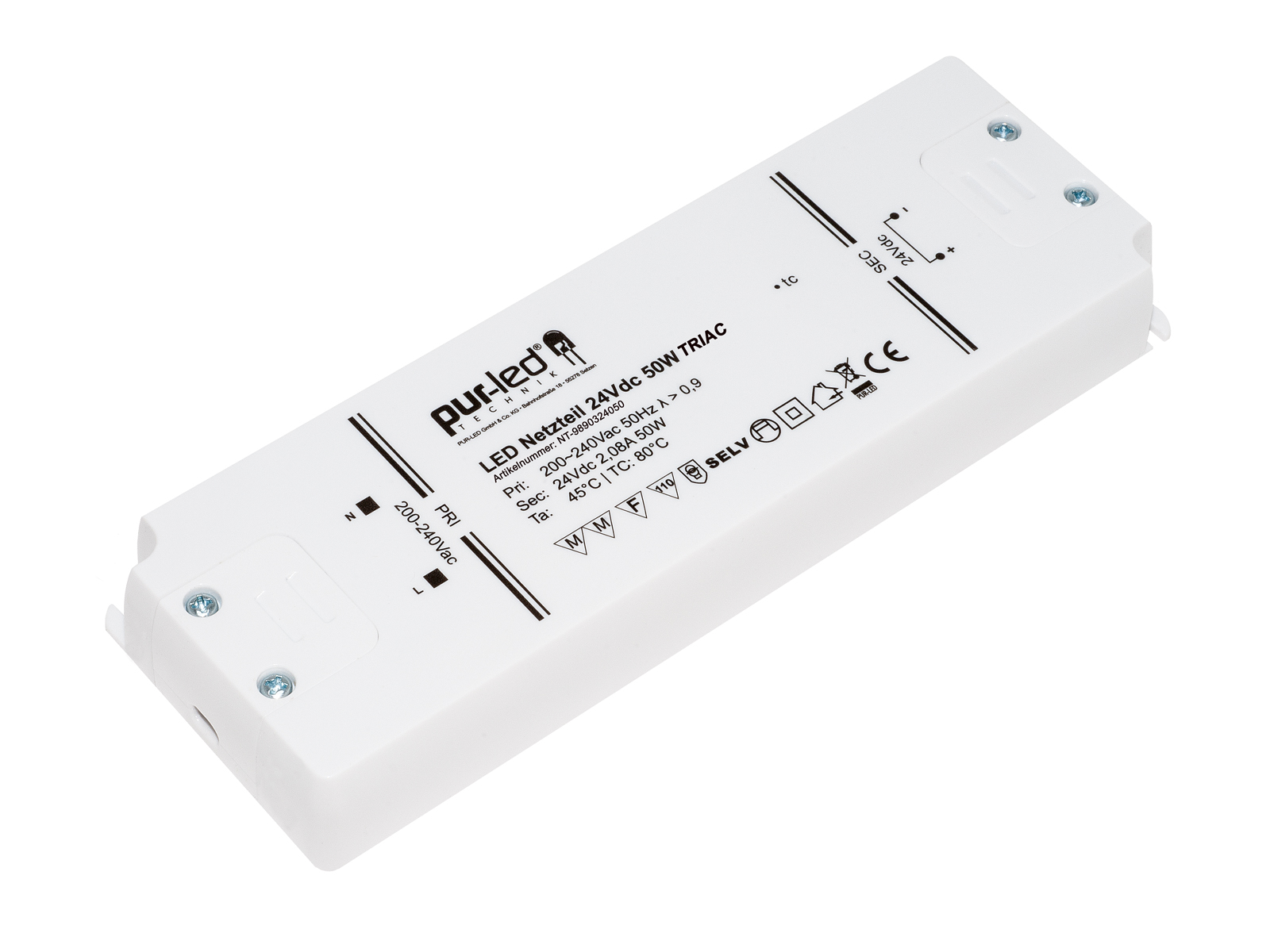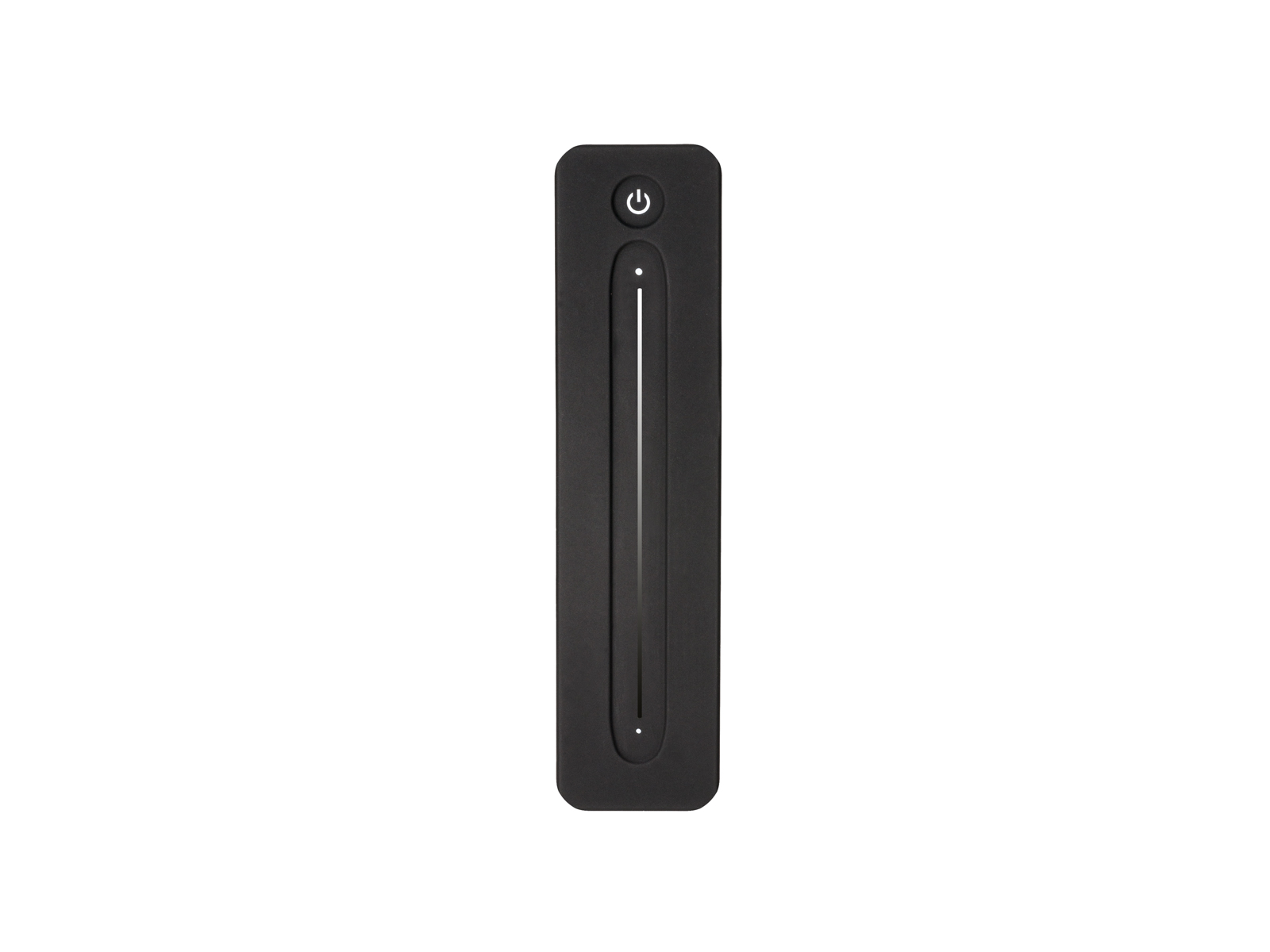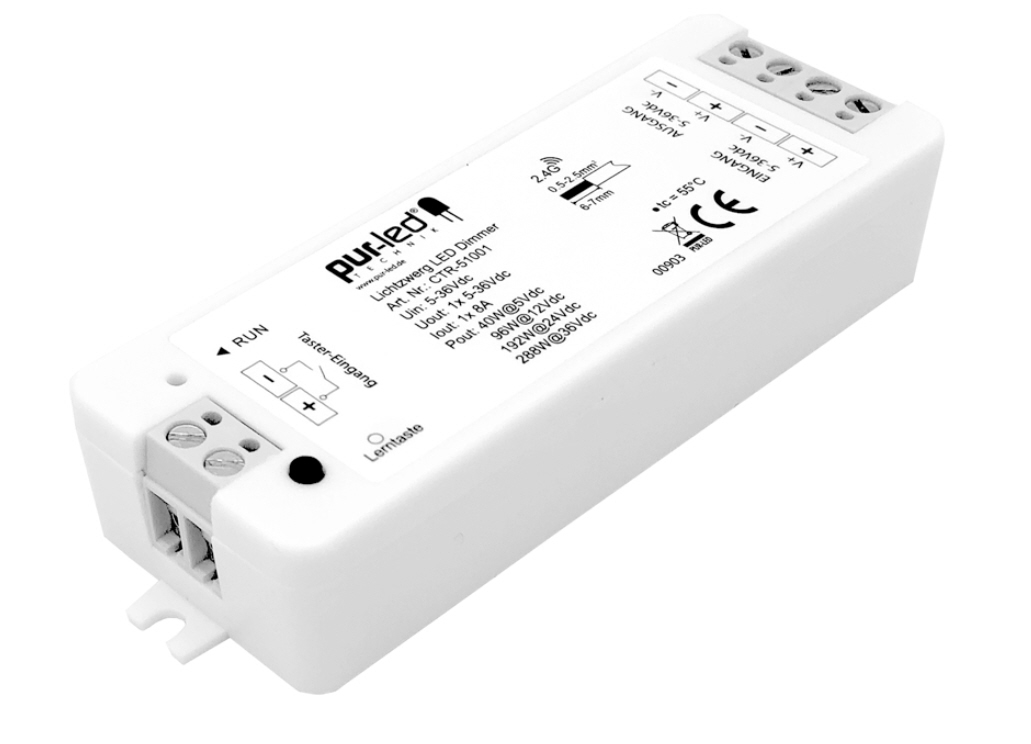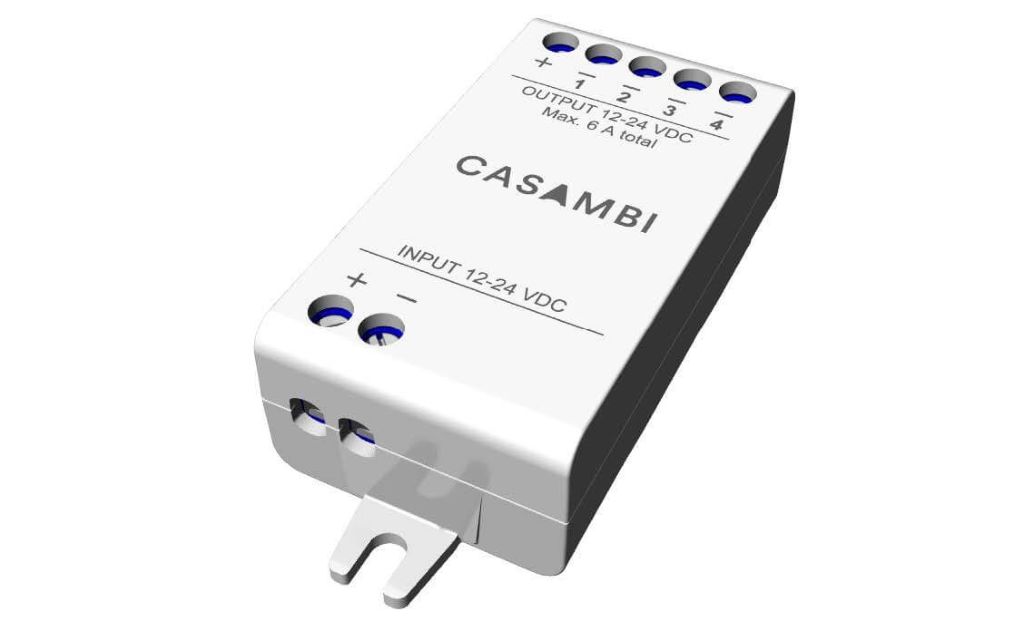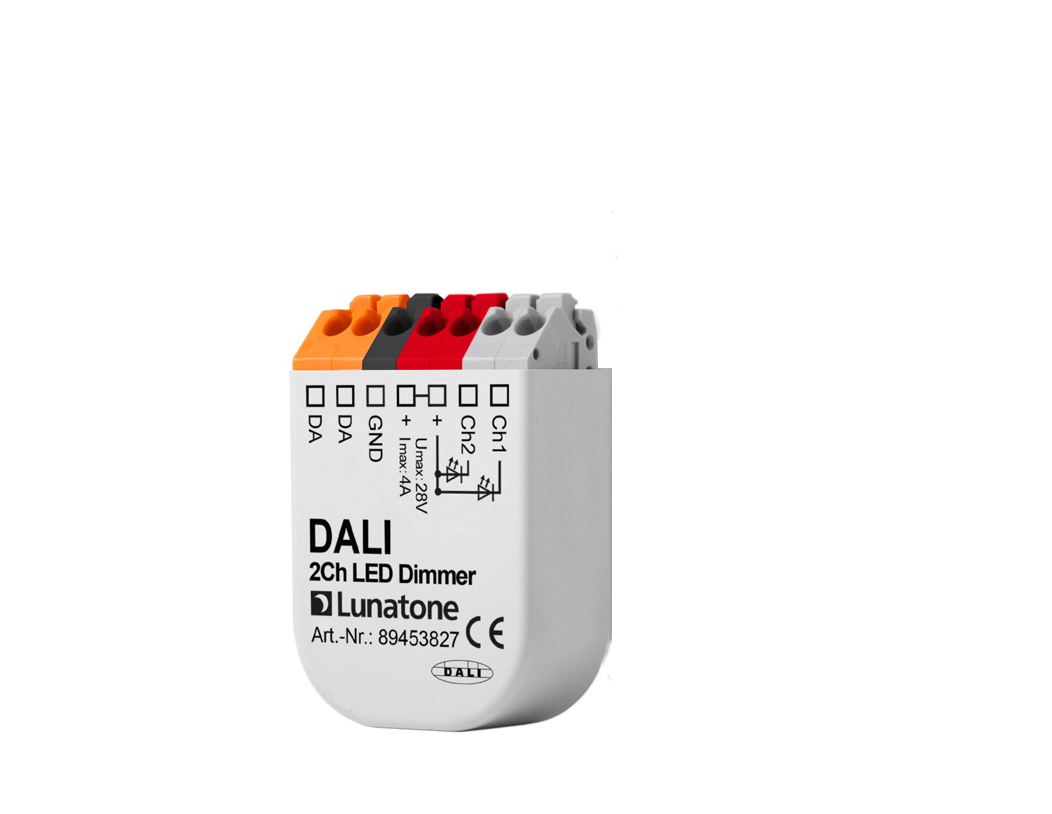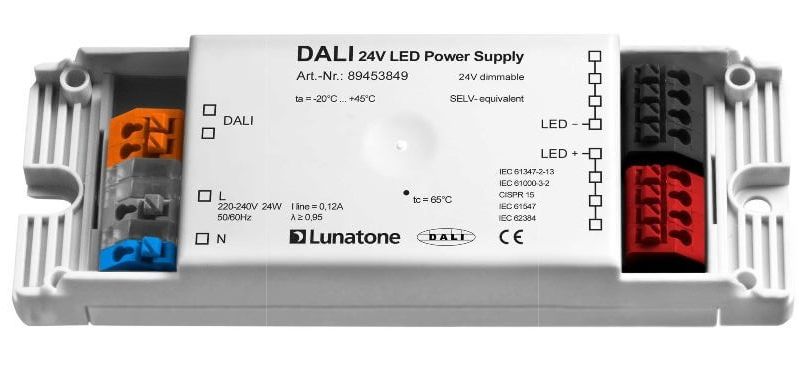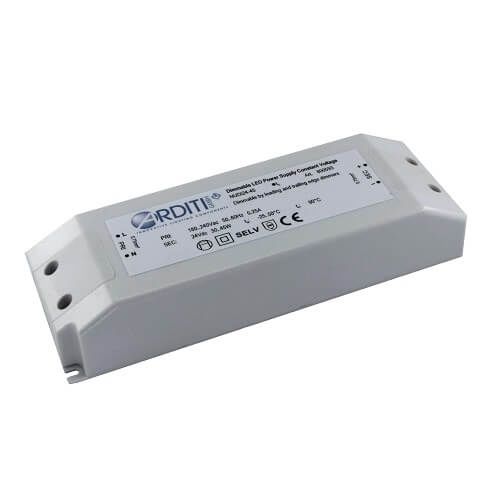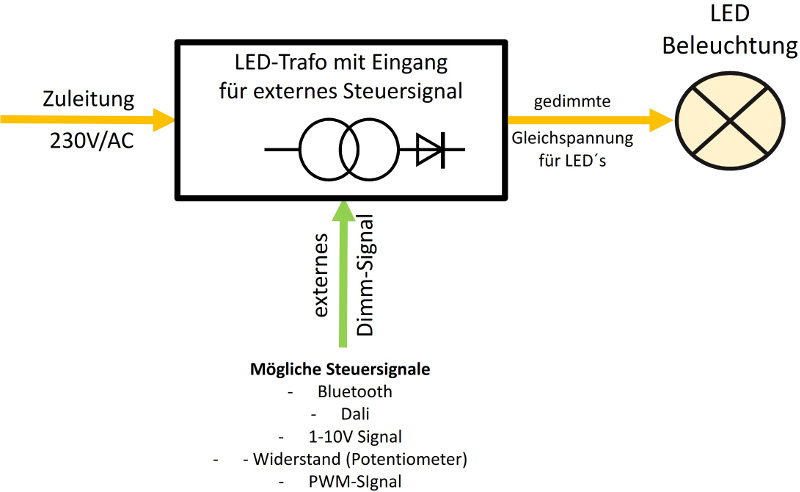How do I connect my dimmable LED strips?
There are several ways to dim LED strips. But how do the individual dimming processes differ?
In the following we describe the individual procedures in detail and present the structure of the different systems.
Overview of dimming concepts for LED strips
- Conventionally dimmable transformers
- Transformers with external control signal
- Fixed voltage transformer with additional PWM dimmer
- LED transformers with integrated PWM dimmer
1. Conventionally dimmable transformers
This form of dimming is particularly suitable if as little change as possible is to be made to the existing house installation. Existing leading/ trailing edge dimmers can still be used for this purpose. The dimmed AC voltage supplies the LED transformers, which are especially suitable for conventional dimming. The LED strips are then connected directly to the LED transformers, so this method is suitable for using a single light colour.
If, for example, an existing dimmable lighting is to be converted to LED strips, in the simplest case only the LED transformers and the LED strips would have to be retrofitted. It should be noted, however, that the LED strips can only be dimmed down to a certain percentage value, since the power required by the transformers is obtained from the dimmed AC voltage.
2. Transformers with external control signal
With this method the dimming takes place directly in the transformers. In this case, the LED transformers are normally connected to mains voltage. In order for the desired brightness to be set, an external dimming signal must be supplied to the transformers. The LED strips are then connected directly to the LED transformers.
The dimming signal can be provided wired (DALI, 1-10V, resistance, PWM signal) as well as wireless (e.g. via Casambi Bluetooth) to the LED transformers. Dimmable transformers are particularly suitable if the LED strips have only one light colour. In order to achieve an optimum result with LED transformers of e. g. Meanwell type HLG in version "B", the rated power of the transformers should be used as well as possible. If, for example, the LED strips need 36 watts, a 40 watt transformer should be used instead of a 60 watt one for a good dimming result.
3. Fixed voltage transformer with additional PWM dimmer

The modular design of this variant ensures maximum flexibility and easy retrofitting. This structure consists of separate LED transformers and independent PWM dimmers. The LED transformers supplied with mains voltage generate the required DC voltage and supply the downstream PWM dimmers.In this version, the LEDs are connected to the PWM dimmers. The dimming signal can be fed to the individual dimmers in various forms (DALI, push-button, 1-10V, Bluetooth, radio, Wlan with additional module).
The PWM dimmers are available in different versions for single and multi-coloured LED strips such as Dual-White or RGB (W). Existing systems can easily be retrofitted with a dimming function by inserting a corresponding PWM dimmer between the LED transformers and the LED strips. With appropriately dimensioned transformers it is also possible, for example, to operate several dimmers on one transformer in order to enable a common switch-on and simultaneously use different dimming methods (monochrome/multi-coloured, different controls).
4. LED transformer with integrated PWM dimmer

In this design, the LED transformers and the PWM dimmers are combined into common units. The advantage here is that only one component is required for the power supply and dimming. The LED transformers with integrated PWM dimmer are directly supplied with mains voltage and simultaneously receive the control signal required for dimming (DALI, DMX).
The LED strips are connected directly to the LED transformer with integrated PWM dimmer. This design also allows the use of multi-coloured LED strips. This variant stands out due to the simple wiring and the space-saving design with full functionality!

